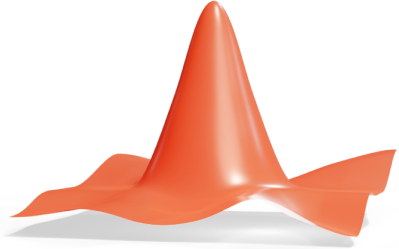11th Grade
What is The Fundamental Theorem of Calculus?
{
"voice_prompt": "",
"manuscript": {
"title": {
"text": "What Is the Fundamental Theorem of Calculus?",
"audio": "What is the Fundamental Theorem of Calculus?"
},
"description": {
"text": " The Fundamental Theorem of Calculus says that the derivative of the area under a curve is equal to the original function � This is an elegant link between differentiation and integration.",
"audio": "The Fundamental Theorem of Calculus says that the derivative of the area under a curve is equal to the original function � This is an elegant link between differentiation and integration"
},
"scenes": [
{
"text": "How is the area under a curve connected to the original function?",
"latex": "",
"//": "Pose the question visually � maybe show a graph and highlight area under it without explanation."
},
{
"text": "Let�s start with a function f. You assume it's continuous and differentiable � in other words, a nice smooth curve.",
"latex": "f(x)",
"//": "Show smooth curve labeled f(x)"
},
{
"text": "Now define a new function F. F(x) is the total area under f from 0 to x.",
"latex": "",
"//": "Shade area under f from 0 to x, animate x moving and area growing. Show the name of the function, F(x), on that area."
},
{
"text": "Here's the amazing part: The derivative of that area function is just f(x). This result is very important and has the fancy name of 'The Fundamental Theorem of Calculus'.",
"latex": "F'(x) = f(x)",
"//": "Write F'(x) = f(x) large on screen. Maybe circle it. Emphasize it�s surprising."
},
{
"text": "Why does that make sense? Think of F(x) as the area so far, and imagine increasing x just a little bit � by delta x.",
"latex": "F(x + \\Delta x)",
"//": "Visual: Show area between x and x + delta x as a thin vertical strip under f"
},
{
"text": "F of x plus delta x is the whole area from 0 to x plus delta x. If you want just the area of the thin strip you've added, you need to subtract F(x). That gives you the area between x and x plus delta x.",
"latex": "F(x + \\Delta x) - F(x)",
"//": "Show total area under curve from 0 to x+delta x, then subtract out area from 0 to x, leaving just the thin strip."
},
{
"text": "On the other hand, since this strip is almost a rectangle, the area is approximately width times height � that is, delta x times f(x).",
"latex": "F(x + \\Delta x) - F(x) \\approx f(x) \\cdot \\Delta x",
"//": "Show thin rectangle with width delta x and height f(x); maybe flash '� width � height' briefly on screen."
},
{
"text": "If you divide both sides by delta x, you might start to recognize what you're seeing � it�s starting to look like the definition of the derivative of F(x).",
"latex": "\\frac{F(x + \\Delta x) - F(x)}{\\Delta x} \\approx f(x)",
"//": "Show delta x getting smaller; maybe fade in a hint or label saying 'definition of derivative?'"
},
{
"text": "As delta x gets closer to 0, this becomes the derivative of F � and it equals f(x).",
"latex": "F'(x) = \\lim_{\\Delta x \\to 0} \\frac{F(x + \\Delta x) - F(x)}{\\Delta x} = f(x)",
"//": "Fade out approximation symbol, show limit expression, then replace with equalities to show full connection"
},
{
"text": "So if f is continuous and differentiable, then the derivative of the area under f � from 0 to x � is just f(x).",
"latex": "F(x) = \\int_0^x f(t)\\,dt \\quad \\Rightarrow \\quad F'(x) = f(x)",
"//": "Box or highlight this as a summary of the result"
}
],
"outro": {
"text": "The Fundamental Theorem of Calculus says that the derivative of the area under a curve is equal to the original function � This is an elegant link between differentiation and integration",
"audio": "The Fundamental Theorem of Calculus says that the derivative of the area under a curve is equal to the original function � This is an elegant link between differentiation and integration."
}
}
}




















